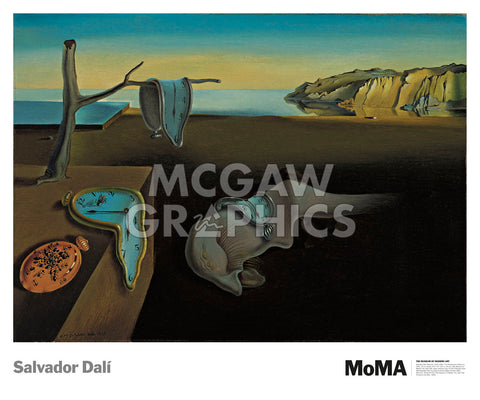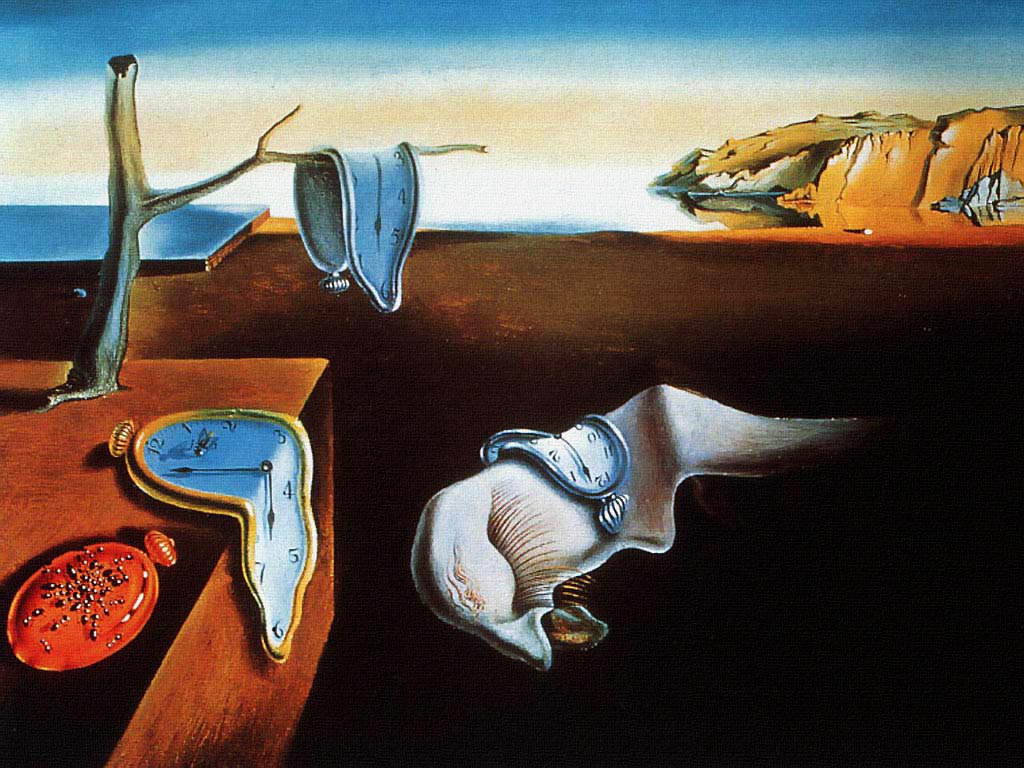The Persistence of Memory, 1931
€ 6.50 · 5 (478) · In Magazzino
Di uno scrittore di uomini misteriosi

© Salvador Dalí, Fundació Gala-Salvador Dalí / Artists Rights Society (ARS), New York, 2017
About the ArtistDali transformed the definition of Surrealism, expressing the unconscious process of thought, dream and associated realities through his paintings and drawings. An eccentric and masterful Surrealist in painting and in life, Dali wrote in his diary two years before entering art school in Madrid during the early 1920s: "Perhaps I’ll be despised and misunderstood, . . . but I’ll be a great genius."
Throughout his life, Dali cultivated eccentricity and a predisposition towards narcissistic exhibitionism, claiming that his creative energies were derived from it. The spectrum of imagery from fantastic to nightmarish visions which Dali produced are the supreme evidence of these idiosyncrasies.
Born in Figueras, Spain, Dali first studied at the École des Beaux Arts in Madrid and was influenced by metaphysical painters de Chirico and Carrà while there. Equally admiring the meticulous realism of the Pre-Raphaelites and French 19th century painters, he began to blend conceptual styles and techniques. Beginning in 1927, Dali exhibited in Madrid and Barcelona, earning a reputation for being one of the most promising younger painters. A visit to Paris in 1928 brought him into contact with Picasso and the Surrealists: Miró, Masson, Ernst, Tanguy and André Breton. Shortly thereafter he became a leading figure of the Surrealist movement. In 1941 he had his first retrospective at The Museum of Modern Art, New York. Today you can find his work in museums around the world, as his works remain extremely popular.
Proudly offering museum-quality art prints crafted in the USA for over 40 years. The #1 source for museum favorites like Andy Warhol, Monet, Van Gogh and more. Shop our curated collections of contemporary, museum, wildlife, coastal, abstract, photography, and vintage art + much more!
© Salvador Dalí, Fundació Gala-Salvador Dalí / Artists Rights Society (ARS), New York, 2017
About the ArtistDali transformed the definition of Surrealism, expressing the unconscious process of thought, dream and associated realities through his paintings and drawings. An eccentric and masterful Surrealist in painting and in life, Dali wrote in his diary two years before entering art school in Madrid during the early 1920s: Perhaps I’ll be despised and misunderstood, . . . but I’ll be a great genius.
Throughout his life, Dali cultivated eccentricity and a predisposition towards narcissistic exhibitionism, claiming that his creative energies were derived from it. The spectrum of imagery from fantastic to nightmarish visions which Dali produced are the supreme evidence of these idiosyncrasies.
Born in Figueras, Spain, Dali first studied at the École des Beaux Arts in Madrid and was influenced by metaphysical painters de Chirico and Carrà while there. Equally admiring the meticulous realism of the Pre-Raphaelites and French 19th century painters, he began to blend conceptual styles and techniques. Beginning in 1927, Dali exhibited in Madrid and Barcelona, earning a reputation for being one of the most promising younger painters. A visit to Paris in 1928 brought him into contact with Picasso and the Surrealists: Miró, Masson, Ernst, Tanguy and André Breton. Shortly thereafter he became a leading figure of the Surrealist movement. In 1941 he had his first retrospective at The Museum of Modern Art, New York. Today you can find his work in museums around the world, as his works remain extremely popular.

The Persistence of Memory, Dalí

Salvador Dalí - The Persistence of Memory (1931)

Salvador Dali the Persistence of Memory Poster 1931, Salvador Dali Print, Surrealism Art, Salvador Dali CANVAS, Famous Wall Art

The Persistence of Memory - Wikipedia

The Pylons take a surrealist turn toward Salvador Dali's The Persistence of Memory (1931).

The Persistence of Memory, Salvador Dali, La Persistència De La Memòria, Surrealism, Melting Clocks, the Soft Watches, the Melting Watches

The Book Appetite: The Persistence of Memory

The Cultural Tutor on X: Why did Salvador Dalí paint those famous melting clocks in The Persistence of Memory? And why did he paint The Disintegration of the Persistence of Memory twenty

The Persistence of Memory (1931) by Salvador Dali – Artchive

Modern Art Movements (by Ar Kush Jee Kamal) by Kush Jee Kamal - Issuu

Salvador Dali, The Persistence of Memory (1931) ,MoMA The Museum of Modern Art, New York city, United States of America Stock Photo - Alamy

Persistence of Memory, 1931 HD Yoga Mat by Salvador Dali - Fine Art America

The Persistence of Memory (1931) by Salvador Dali – Artchive